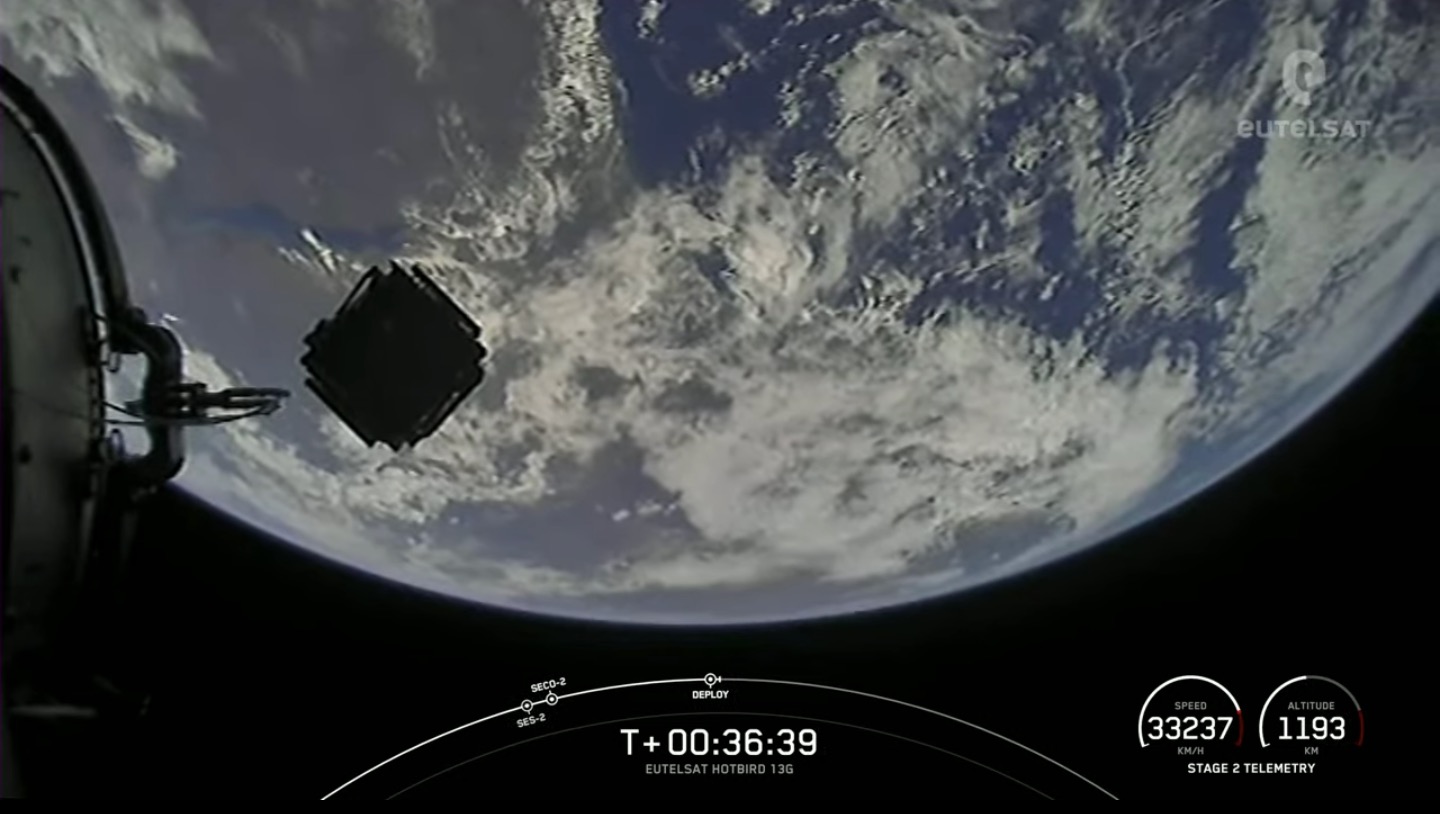SpaceX launched a telecom satellite to orbit and landed a rocket on a ship at sea early Thursday (Nov. 3).
A Falcon 9 rocket carrying Eutelsat's Hotbird 13G satellite lifted off from Florida's Cape Canaveral Space Force Station Thursday at 1:22 a.m. EDT (0522 GMT).
The Falcon 9's first stage returned to Earth a little less than nine minutes later, touching down as planned on SpaceX's Just Read the Instructions droneship, which was stationed in the Atlantic Ocean.
Related: 8 ways that SpaceX has transformed spaceflight

It was the seventh launch and landing for this particular first stage.
"The Falcon 9 first stage booster supporting this mission previously launched CRS-22, Crew-3, Turksat 5B, Crew-4, CRS-25, and one Starlink mission," SpaceX wrote in a prelaunch mission description. (Crew-3 and Crew-4 were astronaut missions to the International Space Station, and CRS-22 and CRS-25 were uncrewed cargo flights to the orbiting lab.)
Hotbird 13G, meanwhile, kept flying atop the Falcon 9's upper stage, which deployed the satellite into geosynchronous transfer orbit right on schedule, about 36 minutes after liftoff.
Get the Space.com Newsletter
Breaking space news, the latest updates on rocket launches, skywatching events and more!
Hotbird 13G was built by Airbus Defense and Space and will be operated by the France-based telecom company Eutelsat. The satellite will eventually set up shop in geostationary orbit, about 22,300 miles (35,900 kilometers) above our planet.
Hotbird 13G will join its twin, Hotbird 13F, which launched to that patch of cosmic real estate aboard a Falcon 9 last month. The two spacecraft will replace three existing Hotbird satellites, taking on quite a bit of responsibility.
The Hotbird satellite family "forms one of the largest broadcasting systems in Europe, delivering 1,000 television channels to more than 160 million TV homes in Europe, North Africa and the Middle East," Eutelsat representatives wrote.
The Hotbird 13G launch was the second that SpaceX conducted from Florida's Space Coast over a roughly two-day span. On Tuesday (Nov. 1), Elon Musk's company launched the USSF-44 mission for the U.S. Space Force from NASA's Kennedy Space Center.
USSF-44 employed a Falcon Heavy rocket, the most powerful launcher flying today. The mission was just the fourth ever for the Falcon Heavy and its first since June 2019.
Editor's note: This story was updated at 2 a.m. EDT on Nov. 3 with news of successful launch, rocket landing and satellite deploy.
Mike Wall is the author of "Out There" (Grand Central Publishing, 2018; illustrated by Karl Tate), a book about the search for alien life. Follow him on Twitter @michaeldwall. Follow us on Twitter @Spacedotcom or on Facebook.
Join our Space Forums to keep talking space on the latest missions, night sky and more! And if you have a news tip, correction or comment, let us know at: community@space.com.

Michael Wall is a Senior Space Writer with Space.com and joined the team in 2010. He primarily covers exoplanets, spaceflight and military space, but has been known to dabble in the space art beat. His book about the search for alien life, "Out There," was published on Nov. 13, 2018. Before becoming a science writer, Michael worked as a herpetologist and wildlife biologist. He has a Ph.D. in evolutionary biology from the University of Sydney, Australia, a bachelor's degree from the University of Arizona, and a graduate certificate in science writing from the University of California, Santa Cruz. To find out what his latest project is, you can follow Michael on Twitter.










